iManage RAVN is many things: indexer, drafting assistant, field extractor and artificial intelligence engine. RAVN is not magic — it is the product of deep thinking by very smart people in England and Chicago who had an idea of making it easier and faster for law firms and corporations to process information.
For iManage users, RAVN is an indexer. It replaces the old, tired IDOL Indexer. RAVN is 25 to 35 percent faster, scales better in both power and replication and is inherently redundant — all while using fewer CPU cycles.
This Indexer is now used in all upgrades.
- iManage Indexer powered by RAVN works only with iManage DMS server v10 and above
- Uses fewer CPU cycles for most installs, especially when clustered
- Uses more RAM than the IDOL indexer
- iManage Indexer powered by RAVN consists of three major modules, RAVN Core, Object Store and Search Server
- iManage Corp. will help size the initial RAVN installation based on number of users, number of documents and estimated growth, among other considerations.
- For smaller installations, there would be one Core and Object Servers and perhaps one or more Search Servers to speed searches. To make searching faster, one adds shards as a horizontal expansion.
- For medium installations, there might be just one Core Server or several Object stores to accommodate millions of documents and several shards of Search Servers.
- It is possible to inexpensively build in redundancy for medium installations by installing replica servers at the same site. RAVN then creates another management instance that keeps track of which production instance is in charge and automatically switches between them. This type of install is horizontal, as you would have shards of Search Servers and replicas of the Core and Object stores.
- iManage Indexer powered by RAVN is designed to be clustered – it is built-in without the need for helpers like Microsoft Cluster Server.
- For larger installations, RAVN replicas can be built between different sites and can mix local redundancy with geo-distant replicas and keep track of it all. The one thing it needs is an odd number of replicas. It can then switch from node to node as needed.
- iManage Indexer powered by RAVN can be easily maintained by using PowerShell scripts to back up the Object and Search Servers
- Indexing jobs can be started and stopped using a job pipeline browser tool
- The familiar Index browser will also be of help in managing the Indexer processes although the ports have changed
- Maintenance can be applied to a replica without the users knowing, as the system dynamically switches between replicas
- Integration with iManage occurs in the same place in the database connection in the server manager tool.
- IManage Indexer powered by RAVN is fully compatible with Security Policy Manager and the Threat Analyzer from iManage.
Law firms and other small- and-medium-sized businesses are increasingly being forced to analyze more data to quickly provide the right answers to their clients and constituents. The iManage AI Engine, in use by the iManage Indexer, Insight and Extract can help make managing that data faster, easier, more accurate and more relevant.
iManage Insight powered by RAVN is designed to assist the user in drafting pleadings, opinions and research. Insight takes the power of the Index to another scale as it dynamically finds phrases and concepts like what you are typing or dictating and shows you examples and alternatives. Insight is the core of the RAVN AI engine. It actively helps you get your job done. Using Insight can help a user deliver more content in less time with greater clarity and deeper provenance.
Using iManage Insight powered by RAVN while drafting a pleading is amazing as it shows you examples from your prior writings, the writings of your peers and, with a research account, from a third-party tool like Westlaw. In a sidebar, phrases like the ones you are drafting appear from those sources, with notations showing from where and when they came as Insight learns your writing style and the subject which you are writing about. Insight is also compatible with Security Policy Manager and the Threat Analyzer from iManage.
IManage Extract powered by RAVN is designed to extract repetitive data from input forms or other structured data. Analyze a mountain of bank data? Researching discrimination data? Wondering how to sift through 250,000 employee records looking for patterns? Need to process the 3M tax records dumped on your firm to suppress your ability to respond before trial? You can teach Extract what to look for, where to find it and then how to analyze it using the RAVN AI engine. Extract reads repetitive data, finds patterns relevant to your needs and can help you present the data in meaningful ways.
What RAVN Means to Law Firms
In iManage, whether using classic clients like Filesite or Desksite or the more modern Work10 Client, having RAVN powering the Indexer is a leap forward in speed and accuracy of query results. The Indexer powered by RAVN can do all the previous indexer could accomplish, but no longer requires stop words so a user can more easily formulate their query using their natural language. Power users can still use Boolean terms, but novice users can easily start a broad search and narrow down in the results in a subsequent query.
Using RAVN also eliminates extensive downtime for backups and restores. Restores are essentially as easy as a cut and paste. Management of the Indexer using RAVN is easier – it is faster to remediate issues because there are tools to use to see a problem quickly, plus extensive logging.
Using the Indexer powered by RAVN is the first step in the RAVN family. Once the firm’s documents are Indexed by the RAVN engine, a firm could add Insight and experience the benefits of being able to mine 20 – 30 years of previous documents for ideas, concepts, and actual phrases to insert and use in a new document. Now older documents can have a new life as a fast repository of knowledge at the firm.
Overall, using Worksite with the Indexer or Insight powered by RAVN is a plus for any law firm as it leads to estimated lower operational costs, less downtime, easier management and happy users.


